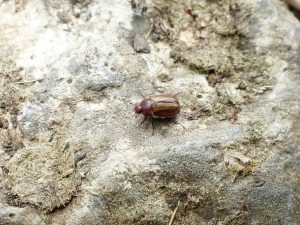With spring and summer, come warm weather and outdoor activities, so do June bugs, which means more bugs to worry about. During the late summer and spring months, these bugs emerge, especially at night, and can be a nuisance in and outside your home. Let’s look at what June bugs are and how their infestation is controlled by professionals.
What are June Bugs?
There are over 100 species of June bugs. But it would surprise you that what we call June bugs are beetles in the scarab family. All the species seem a bit different, so it’s usually tricky to identify them.
One common factor for all June beetles is the fact that they appear at the beginning of spring and summer and seem to disappear at the end of both seasons. They are called June bugs because the adult beetles come out of the soil mostly during the month of June.
June beetles can cause damage to lawns, gardens, and pastures. They feed on vegetation like leaves and other plants.
 How to Identify Them
How to Identify Them
If you see these kinds of beetles in or around your home, you can be sure that these bugs are planning to infest it. June bugs look like scarab beetles, they have six stout legs, an oval shape, and fat antennas. They can be as long as 1 inch, depending on the June beetle you’re dealing with and can be black, brown, or maroon.
June bugs have hairy undersides and are very active in May and June. They are also attracted to light, and you notice them gathering around the lights on your porch, patio, or inside your home.
When They Start to Appear
Before you start seeing June bugs emerge this summer, they start their lifecycle as eggs. They are usually laid up to five inches underground and stay that way for up to six weeks. Then, they become larvae, and it is at this time that they are harmful to your garden or lawn. They eat a lot during this time and can kill all the plants around them.
It takes June bugs between one to three years to complete their larvae stage before becoming pupae. During this time, they don’t move at all and cause no harm to the environment. They also remain underground for about three weeks. Then, when May comes, they emerge from underground as adult beetles.
When they become adults is when we usually notice them around or even inside the home. At the end of summer, the females lay eggs underground, and the lifecycle of June bugs end, and they die. The cycle is then repeated. Therefore, it seems like these bugs appear and disappear mysteriously.
How Tactical Pest Services Will Take Care of June Bugs Infestations
If you notice signs of infestation in your house by June bugs, it’s important to call for a professional like Tactical Pest Services. If you attempt any unprofessional pest control, you could end up making the problem worse and this can be harmful to your lawn or garden. You should call our professional techs so that these June bugs don’t mess with your garden this summer.


